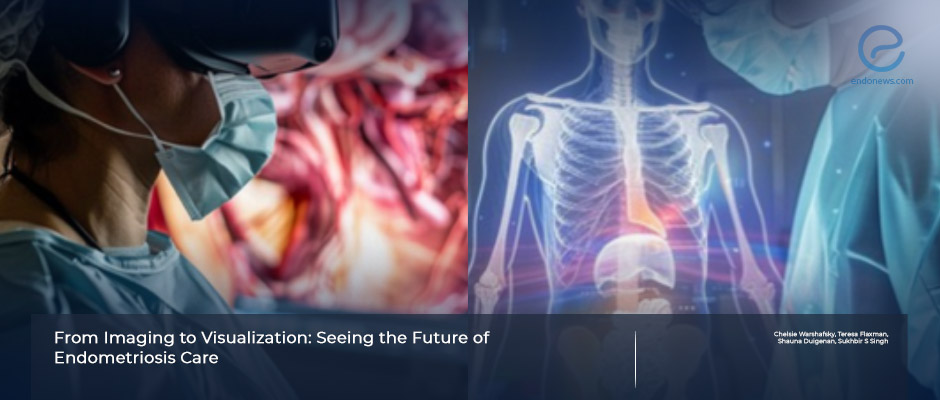Integrating Virtual Reality Modeling for Enhanced Surgical Management of Endometriosis
Nov 1, 2024
Bridging Imaging and Surgery: Virtual Reality in Endometriosis Management
Key Points
Highlights:
- Integrating three-dimensional (3D) printing and virtual reality modeling with standard imaging practices may improve the surgical management of endometriosis.
Importance:
- Understanding the complex anatomy involved in endometriosis is essential for successful surgical interventions.
- By utilizing 3D modeling, this study highlights the potential benefits for both patients and healthcare providers in navigating this challenging condition.
What’s done here:
- Two case studies of patients with endometriosis were conducted at a tertiary care academic center from Ottawa, Ontario, Canada.
- Standard imaging techniques, including transvaginal ultrasound and MRI, were supplemented with 3D printing and virtual reality modeling.
- A virtual reality technician created the 3D models, which were verified by a fellowship-trained radiologist before surgical management was performed.
Key results:
- While expert ultrasound and MRI are effective for most cases, 3D printing and virtual reality modeling provided significant benefits by
- Enhancing interaction with anatomical structures, especially in complex cases.
- Improving patient understanding and experience regarding their condition.
- Aiding medical learners in grasping the application of imaging techniques to pelvic anatomy.
- Enhancing surgeons’ comprehension of pelvic structure relationships, leading to better surgical planning and intraoperative decision-making.
- Further research is planned to quantify these benefits.
Lay Summary
Transvaginal ultrasound and magnetic resonance imaging (MRI) conducted by experts are generally sufficient for the surgical planning and management of endometriosis, as noted in a recent study published in the Journal of Minimally Invasive Gynecology. However, incorporating novel techniques such as 3D printing and virtual reality modeling can enhance these standard imaging modalities.
The authors reported that these advanced approaches significantly improved patients' understanding and experience. Additionally, they provided medical learners with a clearer grasp of traditional imaging techniques and their relation to pelvic anatomy. Surgeons also benefited from a deeper understanding of the interconnections between pelvic structures, facilitating better surgical planning and decision-making during procedures.
Led by Dr. Sukhbir S. Singh from the Department of Obstetrics and Gynecology at The Ottawa Hospital Research Institute in Ottawa, Ontario, the team employed transvaginal ultrasound, MRI, 3D printing, and virtual reality modeling in the preoperative workup of patients. A virtual reality technician created the 3D models, which were verified for accuracy by a fellowship-trained radiologist prior to performing the surgery.
Transforming 2D images into 3D representations allowed surgeons to interact more effectively with patient anatomy, proving particularly beneficial in cases where complex pathology distorted the images.
“Further studies are being conducted to quantify these effects,” the authors noted.
Research Source: https://pubmed.ncbi.nlm.nih.gov/38971402/
endometriosis surgery transvaginal ultrasound magnetic resonance imaging

